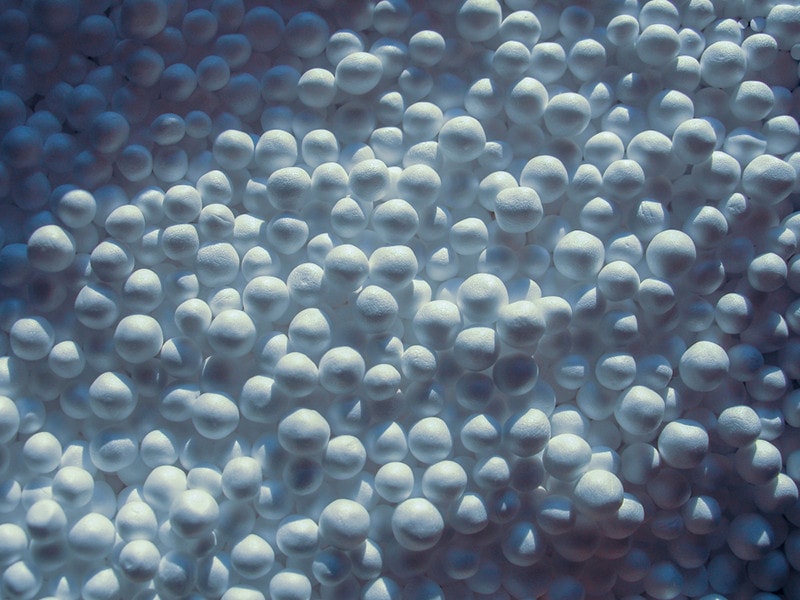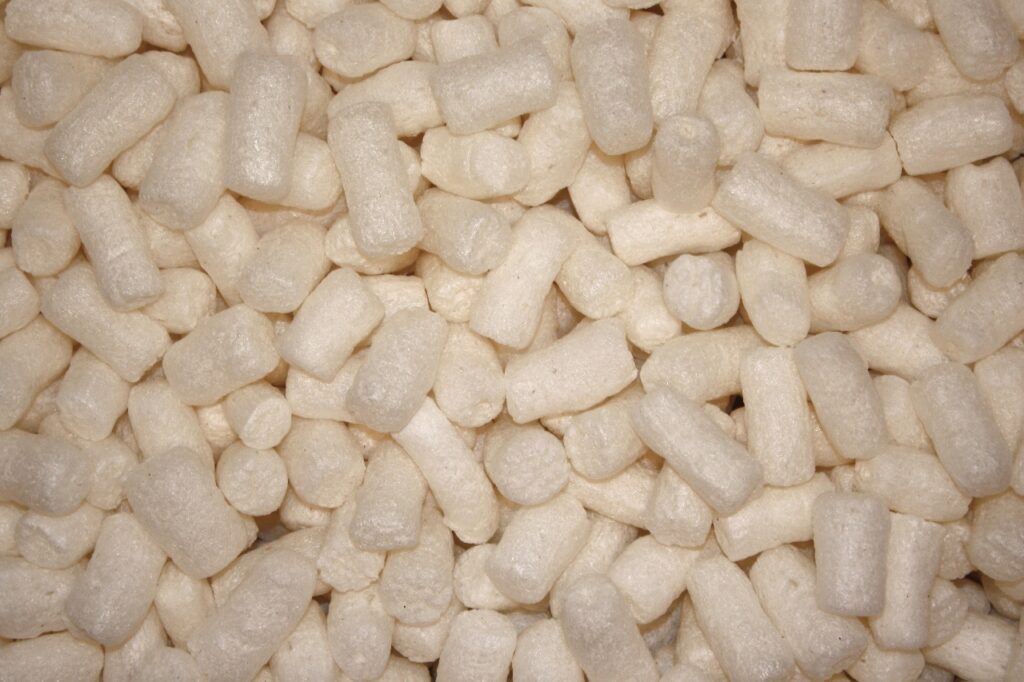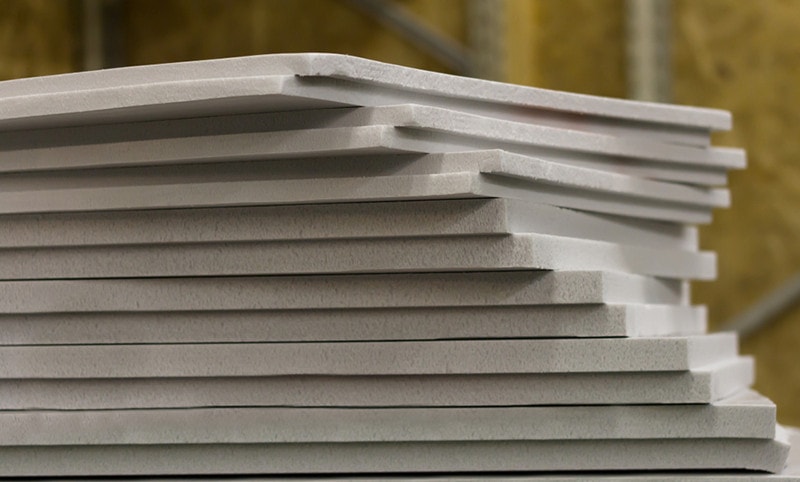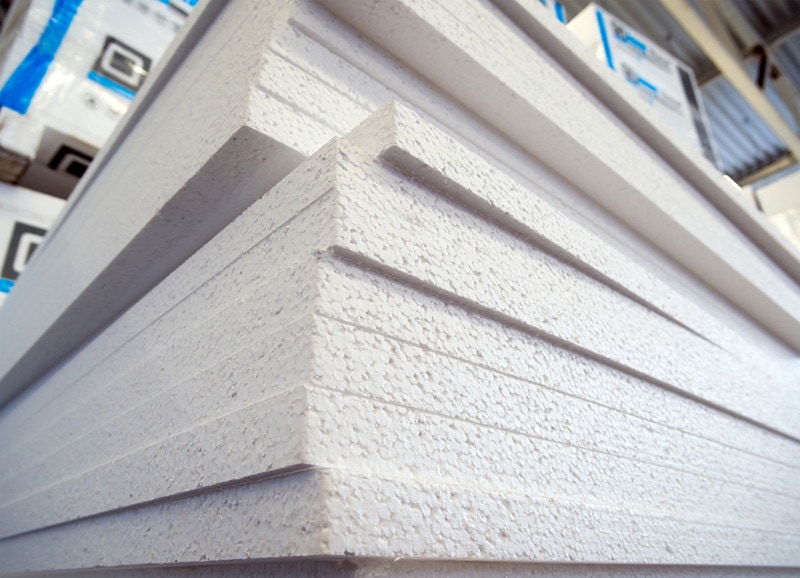Polystyrene Insulation: Is It Right for Me? Everything You Need to Know!
-
Codee Chessher
- Last updated:

Polystyrene is the stuff that Styrofoam and disposable foam dishes are made of, but it’s also widely used as an insulator and soundproofing material for homes and businesses. With excellent thermal and sound resistance properties, wide availability, and a long lifespan, polystyrene seems like a great insulator, but is it? Let’s find out below as we cover how polystyrene foam insulation works, its pros and cons, and plenty of other relevant info.
How Does Polystyrene Insulation Work?
Polystyrene insulation is a rigid, closed-cell foam insulation composed of extruded (XPS) or expanded (EPS) polystyrene. This type of insulation is terrible at conducting heat because it literally has millions of air bubbles inside that trap air and prevent it from going through the insulation. Overall, this means that polystyrene has excellent R-values, which is a way to measure thermal resistance for insulation.
To be more specific, XPS board typically ranges from R-4.15 to R-5.2 per inch, while EPS ranges from R-3.85 per square inch to R-4.2 per square inch. The precise R-value of your insulation will depend on whether it’s EPS or XPS as well as whether the product is low or high density.

Polystyrene’s excellent moisture resistance is a blessing too, as mold is the greatest enemy of any homeowner. Because the insulation is so tightly compacted and has so many air bubbles, it’s virtually impossible for moisture to permeate through it. It helps a lot that it is extremely inexpensive to produce and easy to install—it can be quickly cut to fit nearly any space with just a knife and a bit of mental geometry. You can also easily stack it, which provides even more installation flexibility.
Another important property of polystyrene insulation is its remarkable compressive strength. Normal foam insulation is typically open-cell, while polystyrene is closed-cell. However, regular foam insulation will also suffer compressive damage over time and through wear and tear. Compressive damage will compromise the insulation’s ability to resist heat, air, and moisture.
Polystyrene is also notorious for being nearly impossible to recycle. It breaks into tiny foam particles that can pose health risks to fish and other animals, plus has carcinogenic properties when burned or melted to boot.
You can’t chuck old polystyrene in the recycling bin, either. There’s so little actual polystyrene in insulation that it’s not even cost-effective for recycling companies to process it. A few companies do, but it’s extremely intensive to search for a recycling center near you that also accepts polystyrene. Even if you find one, they likely won’t accept less than bulk packages of polystyrene.
Consult an insulation expert
Find an insulation specialist in your area, and get free, no-commitment estimates for your project.

What Are the Different Types of Polystyrene Insulation?
As we briefly touched on, the two main types of polystyrene insulation are extruded board (XPS) and expanded board (EPS). Let’s delve into each of those down below.
Expanded Polystyrene (EPS)
EPS is created through a foaming process that uses steam to melt and mold polystyrene resin to molds, trapping air in the millions of resulting pockets. The finished products are light and ready to be installed as insulation. EPS is a great external wall insulation to prevent moisture from entering the home and penetrating inner insulators.

Extruded Polystyrene (XPS)
XPS starts out as resinous polystyrene just like EPS but, instead, goes through a special extrusion machine to tightly compress the material. At the same time, steam and gaseous refrigerants are forced and sealed into the insulation’s minuscule pores. Overall, XPS’s rigid structure makes it very hard for air to pass through, and nearly impossible for moisture.
Where Is Polystyrene Insulation Used?
EPS is mainly used to insulate homes and businesses, but it may require XPS or more rigid insulation to serve as a vapor barrier. In many cold climates, this may even be a legal requirement, but you’ll have to check the fine print to see what types of vapor barriers are acceptable for use with EPS. It has some other surprisingly common uses too, so let’s look at those really quickly.
EPS Uses:
- Affordable and disposable food packaging
- Supplementary insulation for refrigerators and freezers
- Affordable and disposable coolers
- Padding for helmets and other safety devices
- Padding for furniture

XPS Uses:
- Thermal insulation for load-bearing structures like car parks
- Roof insulation for green roofs
- Insulation for cavity walls, interior walls, and external walls
- Insulation for basement walls and foundations
Advantages of Polystyrene Insulation
Polystyrene insulation is very versatile. Let’s briefly summarize some of its core strengths for your consideration.
- Excellent thermal resistance
- Good compression resistance
- Easy to manufacture
- Easy to install
- Affordable
- Several types available for various applications

Disadvantages of Polystyrene Insulation
Despite its advantages, polystyrene insulation has some key flaws you should be aware of if you decide to use it for your home or business. Let’s get to ‘em.
- Difficult to recycle
- Environmentally hazardous
- Poses health risks to humans when burned or melted
- Limited strength
- Usually requires a separate vapor barrier
Frequently Asked Questions (FAQ)
When should I use polystyrene insulation?
Polystyrene is an excellent choice in humid climates or when you expect moisture, like with exterior walls or foundations. Basement walls that tend to get cold could benefit from foam’s excellent thermal resistance properties. Polystyrene is pricier than conventional batt-style insulation, so we’d primarily recommend it for spaces that expect moisture.

How is polystyrene insulation installed?
Foam boards are usually affixed to the walls with construction adhesive and specialized screws with large washers that won’t puncture the foam. Lighter boards can be cut or scored with a razor knife and snapped, while heavier XPS might call for a circular or hand saw.
How can I safely dispose of old polystyrene?
Most residential recycling programs don’t accept polystyrene products because it’s simply not cost-effective to do so. Throw old polystyrene insulation in the trash. The best way to reduce polystyrene waste is to take care of your foam insulation and avoid products that use it as packaging. Plus, stay away from disposable food!
Conclusion
Polystyrene insulation is extremely useful for insulating areas where you expect moisture, but it’s not perfect. It poses environmental risks and health risks to humans as well. The good news is that it’s really efficient for the time that you have it.
Featured Image Credit: DUO Studio, Shutterstock
Contents
